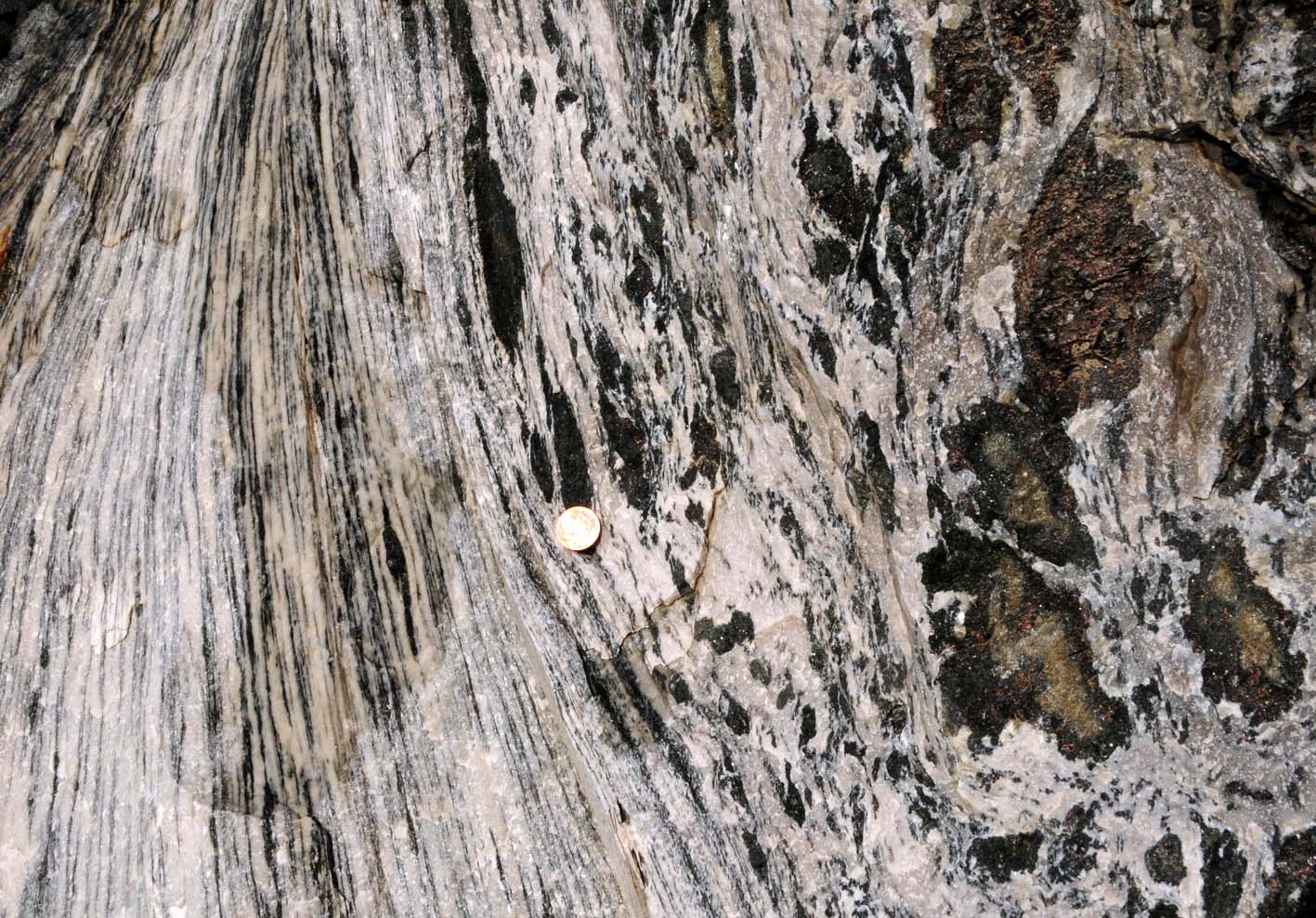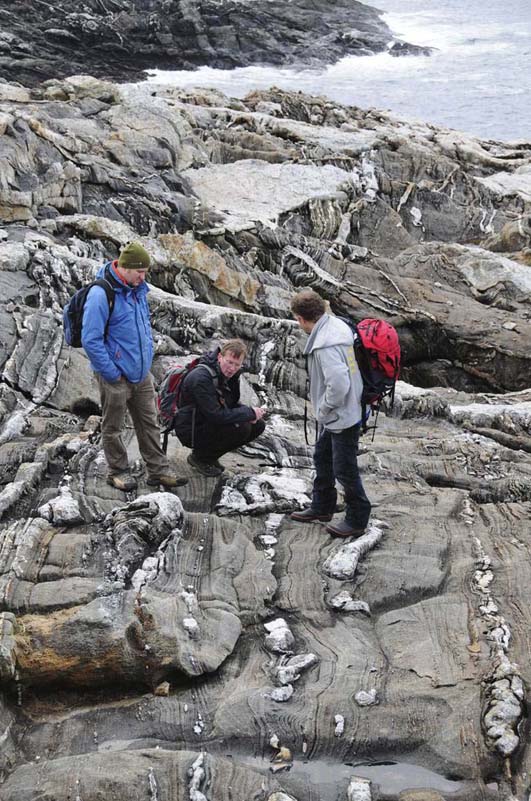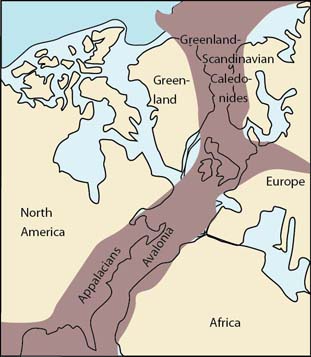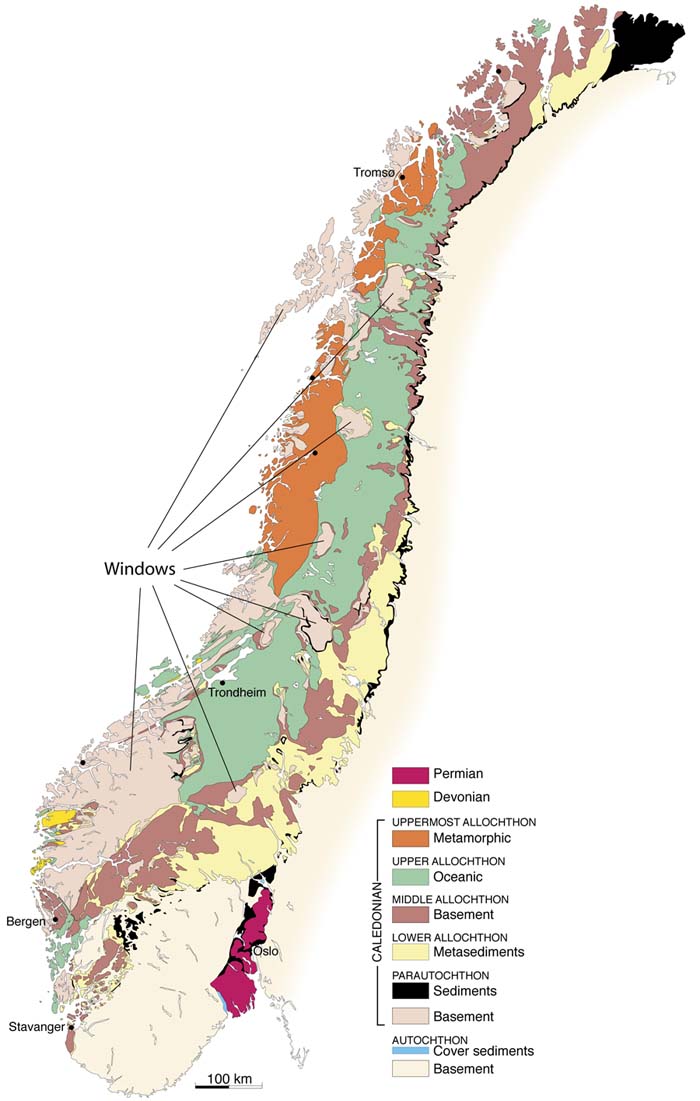
Continent-continent collision revealed
This is where my research started, and I am still interested in the Caledonides. As a young cand scient student I studied the tectonometamorphic relations of the Bergen Arcs, then later (particularly during my PhD) I did a regional study of the many extensional structures found in the S Norway Caledonides. Dating of tectonometamorphic events in the Scandinavian Caledonides has also been an interest of mine, although to do this type of work I have had to rely on colleagues with the appropriate skills. My current interests lie within continental subduction-related processes, particularly its relationship to late- and post-tectonic extension.
then later (particularly during my PhD) I did a regional study of the many extensional structures found in the S Norway Caledonides. Dating of tectonometamorphic events in the Scandinavian Caledonides has also been an interest of mine, although to do this type of work I have had to rely on colleagues with the appropriate skills. My current interests lie within continental subduction-related processes, particularly its relationship to late- and post-tectonic extension.
Caledonian shear zone (left) affecting granulitic meta-anorthosite gabbro of the Bergen Arcs.
Gowing down
 When two continents collide, one of them tends to go down. India is now being subducting underneath Tibet (Eurasia), and in a similar way Scandinavia was subducted underneath Greenland (the Laurentian margin) around 425-400 Ma. During this process the margin of Baltica was heterogeneously deformed and metamorphosed, more and more the closer we get to the actual collision zone (hinterland). We can now observe thrust nappes that once were ripped off the precollisional margin of Baltica, topped with slices of microcontinent(s) and fragments of island arc compexes stemming from the paleo-ocean called Iapetus.
When two continents collide, one of them tends to go down. India is now being subducting underneath Tibet (Eurasia), and in a similar way Scandinavia was subducted underneath Greenland (the Laurentian margin) around 425-400 Ma. During this process the margin of Baltica was heterogeneously deformed and metamorphosed, more and more the closer we get to the actual collision zone (hinterland). We can now observe thrust nappes that once were ripped off the precollisional margin of Baltica, topped with slices of microcontinent(s) and fragments of island arc compexes stemming from the paleo-ocean called Iapetus.
Photo: Caledonian deformation of granitic dikes intruding deformed metasedimentary rocks of lower Paleozoic age, Møkster, Austevoll, studied by U of B geologists Fabian Kohlmann, Joachim Jacobs and Øystein J. Jansen.
Coming back up
Everything comes to an end at some point, and shortly before 400 Ma the Caledonian convergence quickly gave way to a regional extensional regime. This regime is expressed in the form of extensional reactivation of the basal thrust zone and other thrusts that formed during the continent-continent collision. It is also reflected by the exhumation of high- and ultrahigh-pressure rocks, particularly the Western Gneiss Region in SW Norway. Microdiamonds, coesite and eclogite are evidence of deeply subducted rocks that have made it to the surface after the continent-continent collision.
In three dimensions it is quite possible that the Caledonian convergence was oblique, meaning that the overall convergence was transpressional. Similarly, the extension shows some evidence of transtension.
Simple animation of the Caledonian subduction and eduction.

Map showing the extensional setting in the Devonian. WGR=Western Gneiss Region. From Fossen 2010.
Eclogites and ultrahigh pressures
 The occurrence of high- and ultrahigh pressure rocks in the Caledonides adds an intriguing aspect to thevertical movements involved during the Caledonian orogenic history. There are eclogites in some of the Caledonian nappes, but the most widespread and best studied occurrences occur in the Proterozoic basement of the Western Gneiss Region, north of Bergen. On a regional scale, pressure and temperature increase from very low in the Oslo area to conditions indicating 150 km burial depths in the west. These rocks are preserved in lenses with retrograde margins and matrix.
The occurrence of high- and ultrahigh pressure rocks in the Caledonides adds an intriguing aspect to thevertical movements involved during the Caledonian orogenic history. There are eclogites in some of the Caledonian nappes, but the most widespread and best studied occurrences occur in the Proterozoic basement of the Western Gneiss Region, north of Bergen. On a regional scale, pressure and temperature increase from very low in the Oslo area to conditions indicating 150 km burial depths in the west. These rocks are preserved in lenses with retrograde margins and matrix.
Photo: Coesite-bearing eclogite, Selje, Nordfjord.
What's special about the Caledonides?
It contains a large domain of high- to ultrahigh pressure rocks, in what's known as the Western Gneiss Region of SW Norway. It was a relatively cold collision zone, perhaps because the collision/continental subduction happened fast. Also, it is well exposed along the coast, the highlands, and in the many fjords of Norway that also provide a considerable vertical relief. 
Why study the Caledonides?
The Caledonian orogen as exposed today represents a deep section through an ancient continent-continent collision zone. The original mountains are leveled out, but Quaternary glacial activities have carved out steep-sided valleys and deep fjords. By studying the present erosion level we gain information about rocks, deformation structures, structural styles and processes that are operative today under the Himalayas. Thus, combining the two orogenic belts gives us a much fuller picture of convergent plate margins of this type.

Controversies
The way that we understand the Caledonides has changed dramatically over the past 150 years. One of them was the theory that huge rock masses had been thrusted over several hundred kilometers – a model put forward by the Swedish geologist Alfred Törnebohm around 1880, but it took many decades for this theory to become generally accepted.
 An old illustration of the controversy around thrusting of the Caledonian mountain chain.
An old illustration of the controversy around thrusting of the Caledonian mountain chain.
Current questions are the role of extensional detachment faulting around 400 Ma (does it suggest plate divergence or is it syncontractional?) and the mechanism for exhumation of ultrahigh pressure rocks.
Learn about the Caledonides and Norwegian geology
The comprehensive book "The Making of a Land: Geology of Norway" takes the reader through the entire geologic history of Norway, including the Caledonides. The book can be obtained from the Geological Society of Norway.
